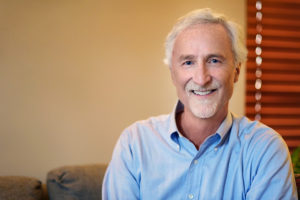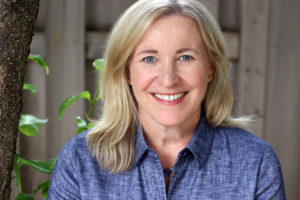 Henry Emmons, MD Henry Emmons, MD |
 Catherine Duncan, MA, BCC Catherine Duncan, MA, BCC |
We consider heartfulness a key quality to going beyond burnout and actually flourishing and building strong resilience.
When you use heartfulness to build resilience, there is less room for something like stress and depression to seep back in.
There is nothing more important in one’s lifetime than loving well. But loving well doesn’t just happen. As with any important skill, we first have to learn to love well. We have to practice. We have to apprentice.
If you have suffered from depression, anxiety, and burnout, you know how hard it can be to stay open-hearted. Here’s the secret: you have to learn to love yourself first.
To begin to love yourself, try seeing the goodness in yourself, even if you think it’s hidden. Every one of us, including you, is doing the best we can at any given time, no matter how skillful or unskillful our best appears.
The ability to see yourself for who you are, to recognize the seed of goodness in you even when you feel lousy, sends a message deep within: You are fundamentally whole. You are going to be okay. Whether or not you even realize it, this message somehow enlarges you.
Someone once said, “Life is so hard. How can we be anything but kind?” Be kind to yourself first, then try to see the goodness in others, even when you think it’s hidden. The ability to see others for who they really are, to recognize the seed of goodness within them, sends a reflection back to them. Whether or not you actually say anything to them, they know you saw them, and that knowledge somehow enlarges them.
This is the work and power of heartfulness. It’s worth the effort and is essential for a flourishing life.
Many of us grew up in families that saw feelings as a foreign language. We didn’t talk about them. We didn’t express them. We usually pretended we didn’t feel them. We grew up where the path to recognition was paved with achievement. Talking about the heart? Not really a thing.
But if we don’t talk about the heart—the very core of who we are—we’re not living fully.
After living through the pandemic, many of us are craving a sense of wholeness, an understanding of what it means to be a human being and what it means to live from the heart.
Do you want to live more from your heart? Again, loving ourselves is the first step. Here are a few more simple ways to get in the habit:
- Breathe. Spend five minutes observing your breath and how it feels in your body. Feel the breath enter, expand, and soften your heart center.
- Visualize someone or something you love unconditionally and hold this being in your heart. Let the feeling of love radiate throughout your body.
- Look at yourself in the mirror and speak to yourself by name: “I love you. I really love you.” Repeat it 10 times in a row.
- Resolve to be as kind to yourself as you are to others. Replace negative self-talk with loving messages. Learn more from Dr. Kristin Neff, one of the leading experts on self-compassion.
These are some first steps toward living from the heart, but not the last. Caring for your spiritual health—connecting with what is beautiful and sacred in yourself and others—is both a daily practice and a lifelong journey.
Creating space for the restorative value of non-doing is also a good practice for living more from the heart.
Finding the balance between activity and rest can be tricky. Growing up, many of us developed a strong belief that being productive, active, and useful was good. It may be hard to let go of that belief after striving for them for most of our lives.
But if you want to live from the heart, it is important is to carve out time when there is nothing you need to do, nowhere you need to go, no one you need to try to be—other than yourself.
The following exercise will help you move from your busy ego mind into your heart.
First, notice when you are ruminating over the past, a worry, a fear, or a future what-if scenario. Can you step back and become the witness to your thoughts and feelings?
Name what you are thinking, either out loud or silently. Then come back into your body, which is always in the present moment. To do that:
- Take a deep breath, feeling your belly expand on the in breath and recede on the out breath.
- Feel the air come in through your nostrils. Feel its coolness as you breathe in and warmth as you breathe out.
- Feel the energy of the breath as it goes over your sinus area.
- Feel the breath turn downward and go down into your chest.
- After you breathe out, in that moment, before the next in breath, just feel. This moment is pure awareness, pure potential.
- As you continue to breathe, feel the sensation in your hands and your fingers. Can you feel the energy moving there? When you’re focusing on your hands, you can’t be thinking of other things at the same time. Your analytical mind stops, and you touch into space, stillness.
Heartfulness, living from the heart, strengthens our resilience and ability to flourish.
Catherine Duncan, MA, BCC companions people who are struggling with chronic illness, life transitions, and grief and loss in her private practice, LearningtoLive.org. A teacher, speaker, and writer focusing on mental and spiritual health, she draws on her experience as a hospice and hospital chaplain, her training in a range of complementary healing modalities, and her own brushes with death and awakening. Her first book, Everyday Awakening, will be published June 2023.
Henry Emmons, MD, is a psychiatrist who integrates mind-body and natural therapies, mindfulness and neuroscience into his clinical work. He is the founder of JoyLab.Coach and NaturalMentalHealth.com, offering trusted information and holistic products to help individuals of all ages build their resilience and rediscover joy. Henry is the author of The Chemistry of Joy, The Chemistry of Calm, and Staying Sharp.
